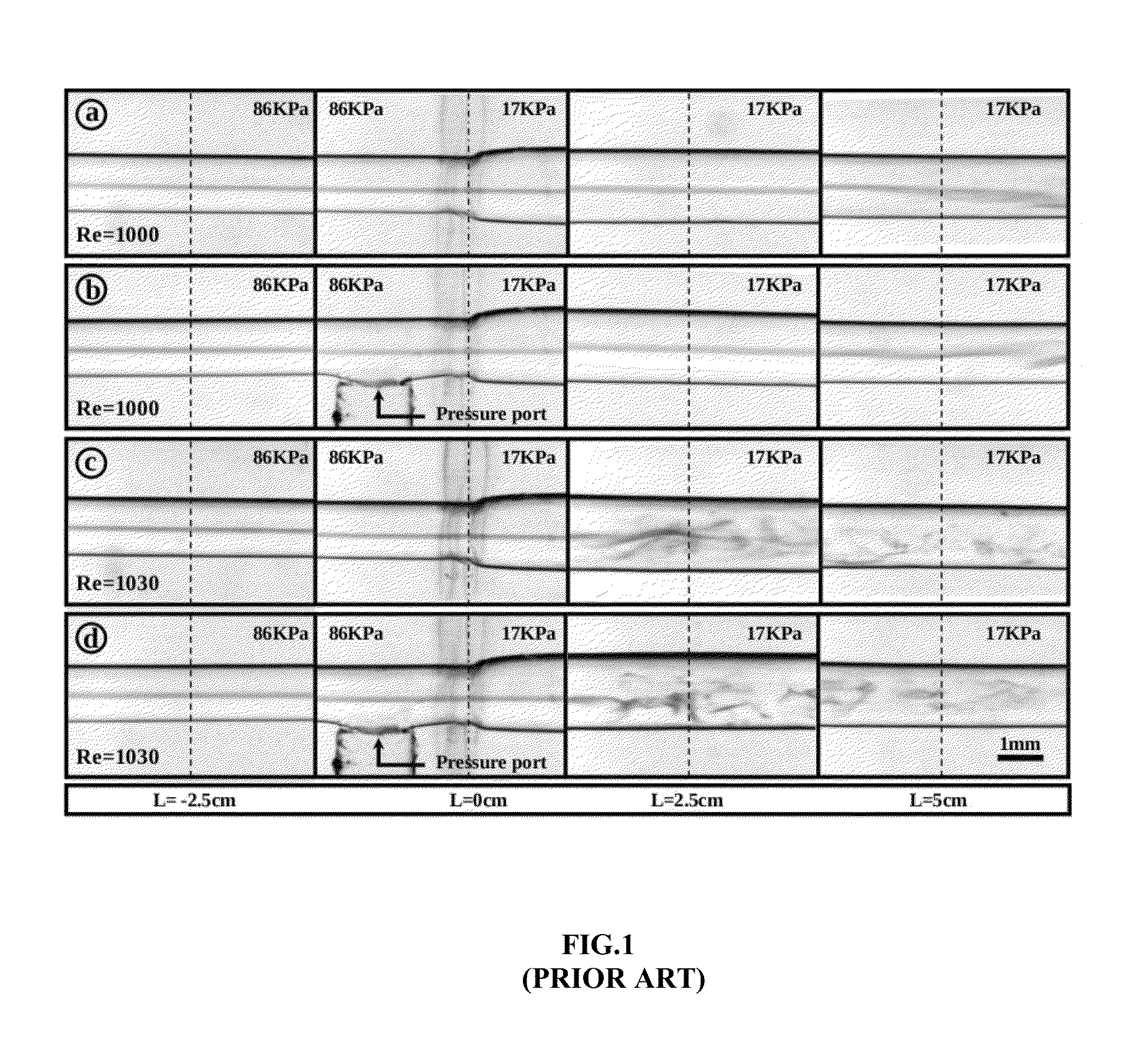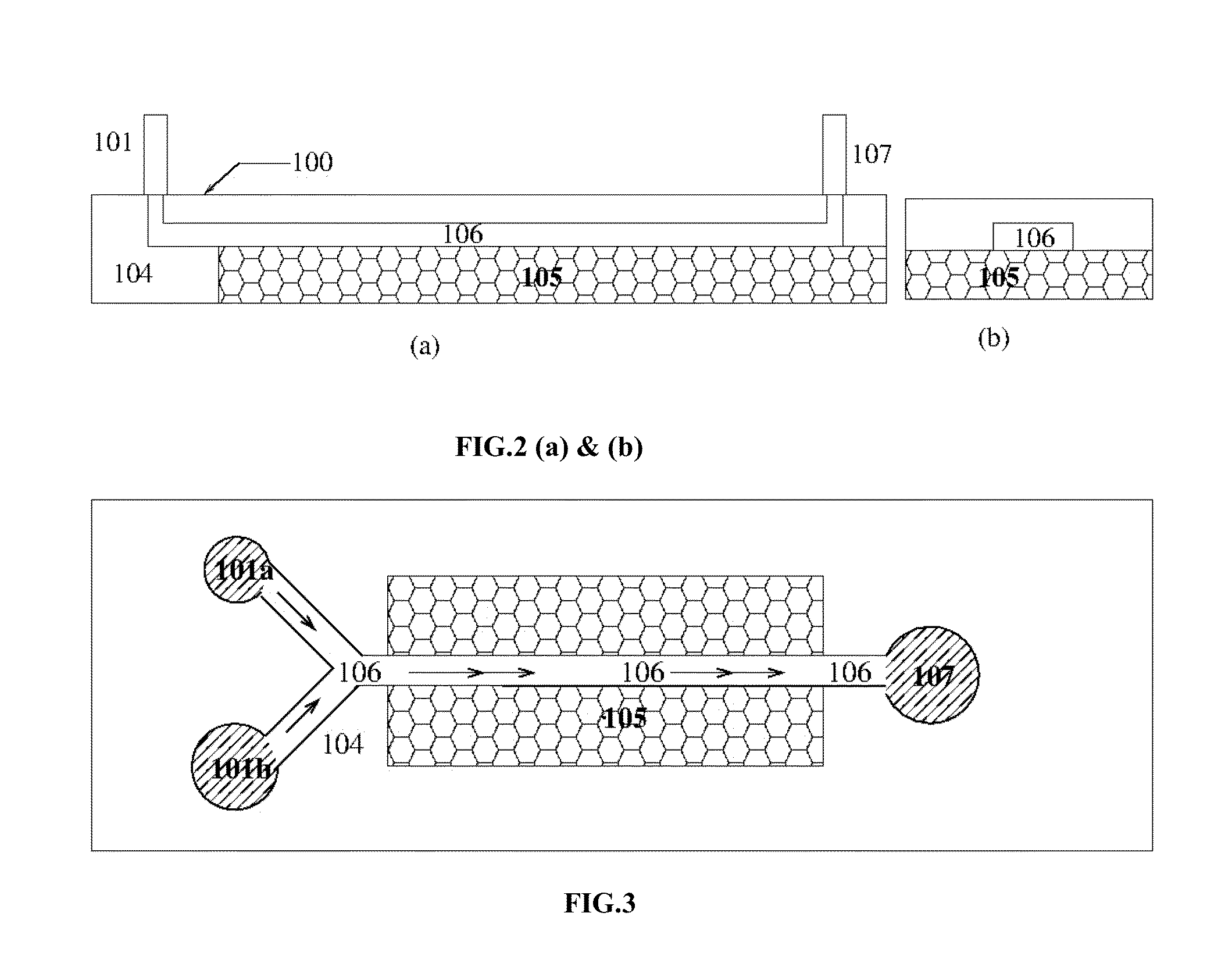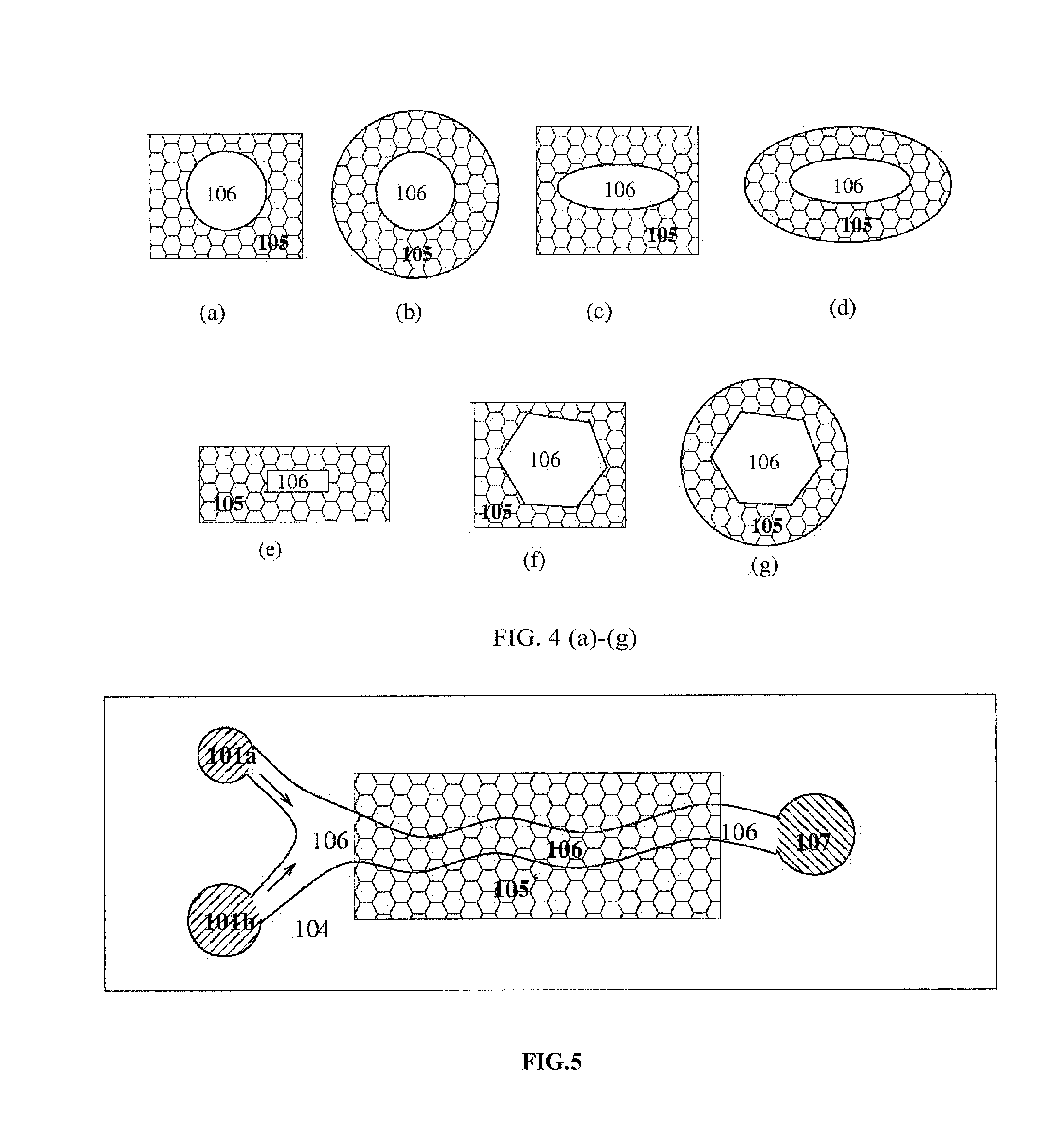There are technological challenges to down-scaling processes that involve mixing, heating / cooling, pumping, reacting and metering of fluids, due to which there are no commercially available products that carry out these complex operations.
Due to the slow mixing, it is necessary for fluids to remain in contact for long periods of time.
Such large pressure drops require pumps and compressors to drive the flow, and increase the complexity and cost of equipment involved.
The large
path length also increases the volume of fluids and expensive reagents that are required.
There is also the difficulty of setting up fluid interconnects between the device and the surrounding fluid inputs or outputs which are strong enough to withstand the high pressures without leakage.
This results in the requirement for long fluid paths in order to provide adequate
residence time for mixing, and the consequent increase in the pressure requirements for pumping the fluid at low velocities.
Moreover, the large pressure differences often result in
mechanical failure of the equipment due to the inability of the tubes and channels to withstand the large forces.
The requirement of external connections makes the device more complex and inflexible in its operation.
The important technological
bottleneck to developing smaller and less complex networks is the slow mixing in these devices.
However, these strategies have the undermentioned limitations.
These require expensive fabrication techniques, where micron and sub-micron features have to be etched in
silicon.
This increases the path-length of the flow and consequently the pressure drop and the power required.
This also increases cost due to complexity of fabricating tortuous channels or sub-micron structures.
The
system also becomes more complicated and expensive due to the requirement of external electrical and magnetic circuits.
This increases the complexity and cost of fabrication significantly, and the pressure drop required to drive flow is also significantly higher.
Complex channel shapes are usually required to enhance mixing and these increase the pressure drop, power requirement, and cost.
The inlet manifolds and the controls are also more complicated since two fluids have to be injected in specified sequence at pre-determined rates.
Droplets can be combined and separated and moved in pre-specified paths, but these require intricate controls which increase complexity and cost of the device.
In the flow through flexible tubes, there theoretical studies have shown that there could be
instability due to the interaction between the fluid and
wall material.
It is also known that there could be
instability even at Reynolds number less than 1, provided the fluid has very high
viscosity (about 1000 times the
viscosity of water) and the wall of the channel / tube is made sufficiently soft.
However, it is infeasible to use such low Reynolds number flows of very viscous fluids for microfluidic applications.
It was previously considered to be infeasible to use this mechanism for microfluidic applications where the Reynolds number with fluids having low
viscosity from 1 to 10 times the viscosity of water at standard conditions, because the
instability can be triggered at a Reynolds number less than the transition Reynolds number of 1000 in a channel only if the wall elasticity is less than 1 kPa, which is difficult to realize in practice.
Though the objective of inducing a disruption of the laminar flow was achieved, the device was not found suitable for
rapid mixing of fluids for many reasons such as the minimum dimension that could be achieved in the disclosed device was 0.8 mm, whereas for microfluidic applications, a minimum cross-section dimension of less than 500 μm, preferable 200 μm, is necessary.
Moreover, fabrication of microconduits of length 15-20 cm was also challenging task for use in microfluidic applications, since the dimensions of the known devices are in the order of 3-5 cm.
More significantly, the disclosed device does not disclose a
complex network of microconduits that can be used in
micro fluidic applications.
Consequently, mixing efficiency of the fluids in the device was poor.
Therefore, due to the combination of poor mixing and small cross-
stream velocity fluctuations, it was considered infeasible to use the devices of this nature to generate
rapid mixing in still smaller devices, since for microconduits of the length 3-5 cm and with the height of about 200 μm and 3-5 cm in length, the
residence time of the fluid in the microconduit becomes smaller, by a factor of 4 to 6 in comparison to a tube of length 20 cm.
Due to this, the
small magnitude of the velocity fluctuations results in poor mixing of fluids in such devices.
The requirement of external connections makes the device more complex and inflexible in its operation.
Even though these devices are commonly called lab-on-a-
chip′ devices, they are actually ‘
chip-in-a-lab’ devices which require large laboratory equipment to drive the flows.
The technological
bottleneck to developing smaller and less complex networks is the slow mixing in these devices.
 Login to View More
Login to View More  Login to View More
Login to View More 


